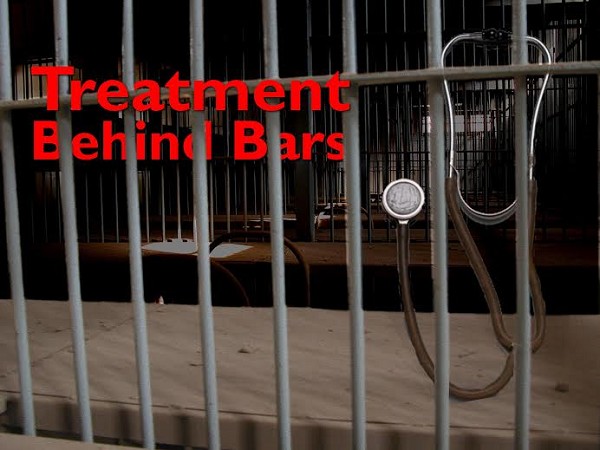
JAIL COSTS RISE: County Commissioners Complain, But Approve Health Measure
December 28, 2013
Leave a Comment
|
||||||||||
| Printer Friendly Story View |
"Are there no prisons? Are there no workhouses?" Ebenezer Scrooge was famously quoted by Charles Dickens when asked for a donation for the poor.
Chances are if Scrooge was around here today he would be more upset by the health care costs of maintaining a prisoner in those prisons or workhouses.
An extra $135,000 for inmate health care was approved reluctantly by Bay County commissioners earlier this month.
Commissioner Brandon Krause questioned why the county had to pay for health costs of inmates, two of whom are seriously ill.
"Aren't there organizations that will pick up these costs?" Krause queried.
"It's the law," explained county corporation counsel Marty Fitzhugh.
Realizing they had no choice, commissioners voted 7-0 to put the extra money in the sheriff's budget to cover the health costs, mainly for two inmates.
The Pew Charitable Trust, in a recently issued report on inmate health costs, noted: " Prisoners have a constitutional right to adequate medical attention, and states are legally required to ensure that cost-containment strategies preserve health care quality for incarcerated offenders."
Rising costs of inmate care is not unique here -- medical expenses are exploding nationwide, putting even more stress on tight state budgets.
According to researchers at the the Pew Charitable Trust, three factors in particular are driving up state prison health-care costs:
1-aging inmates,
2-a prevalence of physical and mental illness and
3-the costly nature of delivering health care to a prison's inmates.
Nationwide, spending on health care and on corrections is putting serious pressure on state budgets. Medicaid -- the largest component of states' health care spending -- has been the fastest-growing part of state expenditures over the past two decades, with corrections a close second.
Inmates' health, the public's safety, and taxpayers' total corrections bills are all affected by how states manage prison health care services. Effective treatment of inmates' physical and mental ailments, including substance abuse, improves the well-being of prisoners and can reduce the likelihood that they will commit new crimes or violate probation once released.
The nation's elderly prison population is still relatively small, but it's taken up an increasingly larger share of the total population. In 1999, about 3.4 percent of the prison population was 55 and over. By 2011, it was 8.6 percent.
And an older population means more expensive health care. In Michigan, a state study found that in a single year (2009) health care for inmates ages 55 to 59 cost more than four times more than for those aged 20 to 24. In Georgia, caring for prisoners ages 65 or older costs about $8,565 per inmate each year. The average annual health-care cost for Georgian prisoners under 65? $961 per inmate.
Spending increased in 42 of the 44 states, with median growth of 52 percent. In a dozen states, prison health expenditures grew 90 percent or more. Only Texas and Illinois experienced inflation-adjusted decreases in this spending area. Per-inmate health care spending rose in 35 of the 44 states, with 32 percent median growth.
In 39 of the states, prison health care costs claimed a larger share of the total institutional corrections budget, increasing, on average, from 10 percent in fiscal 2001 to 15 percent in fiscal 2008. Maine, Nevada, North Dakota, Oklahoma, and West Virginia were the only exceptions.
This significant growth reflects, in part, the rise in prison populations nationally. Higher per-inmate expenses and the expanding slice of corrections budgets devoted to health care suggest that other factors are also pushing costs up, including:
Prevalence of infectious and chronic diseases, mental illness, and substance abuse among inmates, many of whom enter prison with these problems. Challenges inherent in delivering health care in prisons, such as distance from hospitals and other providers.
So, what's a state to do? According to experts interviewed by Pew, states are trying to rein in costs by providing remote health care, outsourcing it altogether, enrolling prisoners in Medicaid and paroling elderly or sick inmates.
Mississippi's three-year-old program to enroll prisoners in Medicaid generates about $6 million annually in federal reimbursements. Louisiana saved $2.6 million over fiscal years 2009 and 2010 through federal Medicaid reimbursements. And New York's comptroller estimates that the state could save up to $20 million annually through such reimbursements.
Under the new federal health-care law, eligibility for Medicaid will be expanded in 25 states, meaning more inmates will be able to qualify, offsetting state prison health-care costs.
Releasing low-risk older prisoners could help drive down costs and prison size, too. Ohio expects to save more than $46 million and slash the prison population by 7 percent over three years by granting parole to more of its elderly prison population. New York, Illinois, California and Connecticut have also pursued similar policies for low-risk elderly and/or sick inmates.
| Printer Friendly Story View |
|
|

Dave Rogers |
|
|
|
Printer-Friendly Story View
0200 Nd: 04-14-2024 d 4 cpr 0
12/31/2020 P3v3-0200-Ad.cfm
SPONSORED LINKS
12/31/2020 drop ads P3v3-0200-Ad.cfm


